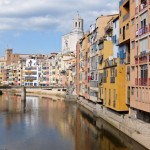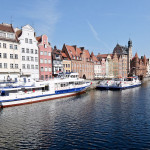Symbolised in gifts, ornaments, T-shirts, sculptures, artworks and street paintings, they dominate restaurant menus and the town is even named after them. Zahara de los Atunes is all about tuna.
Since Phoenician times Zahara de los Atunes has been renowned for the Almadraba, a net-trapping method of tuna fishing, which is still practised today. A dramatic test of strength between fish and man, the Almadraba usually takes place between May and June when the tuna migrate from the Atlantic Ocean to the warmer Mediterranean. Some tourists visit at this time specifically to watch the levantás (catching). The red tuna of the Almadraba is considered a gastronomic prize, and is served in a myriad of recipes in the local restaurants.
Zahara de los Atunes is also known for its endless stretches of dazzling, sandy beaches fringed by native flora and crystalline blue waters. Where the Mediterranean meets the Atlantic there is a strange interaction of winds producing air so pure and energising that, reputedly, it can refresh your body’s balance and equilibrium. Not surprising, then, that it has become a hot-spot for tourists, with new hotels, villas and various types of accommodation, appearing along this stretch of Andalusia’s golden coast.


We book into the TUI BLUE, adults only, 5-star Zahara Beach and Spa Hotel for a few days, to indulge in some of that revitalising “vitamin sea”.
Preferring boutique to resort hotels, we are pleasantly surprised to find that, despite having 143 guest rooms, the hotel is so designed that it seems smaller than its actual size. The inner atrium has the ‘wow’ factor, with a contemporary take on the traditional Andalusian courtyard, allowing exposed views of each floor and teasing glimpses of the sea and outdoor pool. The décor is a seductive mix of driftwood-style furniture, soft, beachy colours, and pops of vibrant artwork. Our luxurious room has a free-standing bath.
I don’t particularly like baths in the bedroom, but it looks effective. We have glorious sea and pool views from our balcony, though I am a little envious of the suites on the lower floors with their swim-up private pools. The hotel has great facilities, with a gym; a spa with infinity pool; a novel-concept ‘Beer Spa’ (apparently beer has beneficial properties, apart from the obvious – it is also good for skin regeneration); a huge outdoor pool; chill-out lounges; a rooftop bar and two restaurants – Trafalgar, a buffet restaurant, and the a la carte Culinarium.


With the beach across the road, and the town a short walk away, this hotel is a great choice.
Zahara de los Atunes town is not fancy, or even particularly picturesque, but it is authentic and characterful, with some great little boutiques and artisan shops. With tuna fishing at its core, its inescapable influence on the town is palpable, particularly in the restaurants, where tuna is a staple on most menus. You will find meat dishes, from the locally bred Retinto cow, but vegetarians will struggle. There are chiringuitos on the beach, for fresh seafood, and plenty of bars and restaurants in the town.
We lunch on delicious tapas and a glass of wine at Bar Volver. For dinner we try La Botica, one of Zahara de los Atunes’ best known restaurants, and it doesn’t disappoint. In a sixteenth-century building originally connected to the Almadraba and belonging to the Duke of Medina Sidonia, it now has a contemporary vibe. Predictably, tuna features extensively on the menu. I keep it simple with a grilled tuna steak, which is cooked to perfection, while my other half chooses the tuna tataki, served with delicious dip sauces.


Zahara de los Atunes has more to offer than just beach life. Explore the ruins of the Palacio de la Chanca, built in the 15th century by the dukes of Medina-Sidonia, who profited from the tuna-fishing industry. The tuna was processed in the palace precincts and butchered next door in what is now the Nuestra Senora del Carmen church.
It’s worth peeking inside to appreciate the internal architecture. If you like markets then visit Mercado de Abastos, where you can buy local produce, fresh fish and meats. Zahara de los Atunes is in an ecological area, perfect for hiking, cycling, horse-riding and mountain climbing, as well as water sports. A short drive along the coast, Bolonia beach is stunning, and sits alongside the site of a restored Roman town.
Columns from an old amphitheatre stand out incongruously against a mountain backdrop. Further along the coast, Tarifa’s beaches are renowned for kite and wind surfing. Tarifa old town is a throwback to the 70’s, its narrow streets lined with surf shops and psychedelic- painted walls, evoking memories of hippy days (for those old enough!). Quiet by day, as most people are surfing, the town springs to life at night with lively bars and restaurants.

Visitors flock to the Costa de la Luz during the summer months, attracted by the beach life. We visit in October, towards the end of the season, and Zahara de los Atunes is winding down for winter, with some restaurants and shops already closed. A few stay open throughout the year. The advantage of going out of season, as any committed beach-walker knows, is that the surf can be spectacularly wild and wonderful and those glorious beaches are so much more enjoyable without the tourists!
Tell Me More About Zahara De Los Atunes
Zahara De Los Atunes is a 2-hour drive from Marbella on the coastal AP-7 motorway and the N-340.






